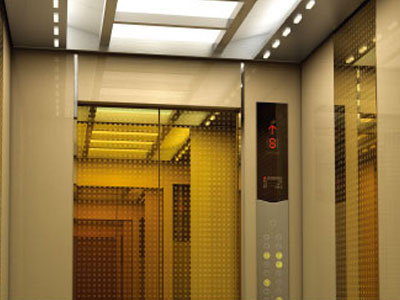
The most initial thing that the tenants or visitors come across after entering a building is an elevator system. The impression they receive from this critical encounter either enhances their initial experience or negates it, which, in most cases, lays the foundation for future experiences and psychological expectations. Typically, elevators have a lifespan of 20-25 years, but their performance might begin to decline over time, or their technology might improve with the latest advancements.
Anticipating such a scenario, elevator manufacturers leave room for the upgradation of an elevator unit. Specific improvements as per the requirement and technological advancement can avoid a complete overhaul of an elevator system, which in turn, boosts its performance and helps in saving on the heavy maintenance costs. Given the importance of elevators for both current and prospective users, elevator modernization comes in as a handy tool for builders and owners to upgrade their elevator systems. Differentiating their properties in the market by exhibiting the adoption of a new and more recent elevator technology that is likely to last longer than older systems.

Elevator modernization is defined as an improvement in the elevator systems to boost their efficiency, as per the advanced technology and new features, to stay afloat with the latest trends and cater to the present-day customer requirements. The process includes upgrading critical parts of an elevator system to improve its efficiency, appearance, design, technology, and various other aspects that directly affect an elevator’s performance.
While typical modernization affects the controller equipment and the turning motors, in many cases upgrading certain elements is more than enough to completely transform the original product into a better version that is in sync with modern-day usage.
Having outdated elevator units installed, while moving up and down the hoistway can hamper the soothing elevator experience one would like to extend to the users, let alone the discomfort from the noise, cabin appearance, and possible vibration of older versions. Elevator modernization aims at settling these issues to ensure maximum user comfort with the elevator systems. Some benefits of elevator modernization include:
One of the most significant advantages of elevator modernization is that it definitely leads to an increase in the efficiency of an elevator system. Modern elevator technologies consist of destination dispatch technology that can group passengers as per their destinations, eliminating wasted trips and reducing wait times. Further, upgrading to microprocessor-based systems helps with learning traffic patterns in a building and adjusting accordingly. Microprocessors in modern-day elevators also allow improved acceleration and deceleration rates and faster door opening and closing rates.
Mitsubishi Electric’s proprietary Destination Oriented Allocation System (DOAS) helps reduce congestion in elevator halls with individualized car allocation based on travel time, voice guidance mode and navigating sounds, integration of security cards, and a whole lot more.

New technologies also bring efficiency in terms of the energy consumption of an elevator system. Elevator modernization efforts usually result in lower energy consumption, lower heat generation, and a reduction in the amount of energy needed to keep the machine room and the hoistway cool. Upgrading with LED units and lighter fans also helped in finally bringing the energy costs significantly down.
With the upgradation of the machinery and the technology employed in an elevator system comes heightened levels of reliability. In contrast to yesteryears, modernized elevators are less likely to malfunction, leading to fewer instances of temporary breakdowns, stopping in-between floors, and random faults. Scaling this aspect in a high time-sensitive zone where breakdowns could mean heavy losses, the reliability of elevators plays a significant role in their ability to transport people across floors easily.
Modernization of an elevator system also ensures lesser maintenance and repair costs to fall back on as the new elements replace the old ones, which are better in terms of build, structure, cost and functionality. Integrating updated components increases the elevator system’s life and ensures reduced maintenance supervision as the modern-day parts are easier to find, repair and replace as per the requirement. Elevator modernization also helps to reduce the electromagnetic noise that can harm wireless computers and networks, thus further reducing maintenance efforts.
Another great reason to opt for elevator modernization is to bring the outdated elevator system’s safety code into compliance with the government’s latest safety regulations. This compliance will prevent tragic elevator malfunctions, injuries, and high safety violation penalties while minimizing the probability of any breakdowns due to safety hazards. Latest technologies improve door functioning, car leveling, upgraded lighting, intercom facility, emergency power supply and more to ensure that the elevator’s safety is on par with modern standards, offering total peace of mind to the passengers.
Ignoring elevator modernization and being stringent with the traditional features can degrade the ride quality of an elevator, which would lead to increased complaints from the residents and the users regularly using it. They would experience squeals, jerks, noise, tremors and anything other than a smooth riding experience. Upgradation of components and technologies helps create a pleasant experience.
While antique elevators certainly catch the eye, they are not the right match for newly developed buildings. With the advancement in time and technology, people’s taste and perception of machines have changed - preferring to accept only a specific appearance of elevators. Modernizing the elevator system’s aesthetics can make it seem more appealing and match the interiors of a building.
These are some functional reasons that showcase the importance of elevator modernization to maintain a consistent market value and provide passengers with the highest level of safety and comfort that matches modern standards.